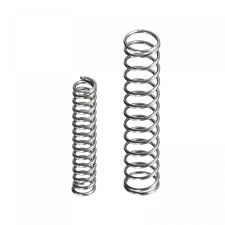
- Mobile Phone
- +8613931874955
- sales@cntcmetal.com
wall ties in blockwork
Wall Ties in Blockwork An Overview
Wall ties, also known as wall anchors or ties, play a pivotal role in the stability and integrity of blockwork structures. These components provide essential lateral support and connection between the inner and outer leaves of masonry, ensuring that walls maintain their strength and durability over time. This article aims to explore the importance of wall ties in blockwork, their types, installation practices, and best practices for ensuring structural integrity.
The Importance of Wall Ties
In blockwork construction, wall ties serve several crucial functions. Primarily, they enhance the structural stability of cavity walls by securing the two leaves of masonry together. This connection helps prevent the outer leaf from moving away from the inner leaf, a scenario that could lead to deformation and ultimately, structural failure. Additionally, wall ties help resist wind loads, thereby providing a degree of resilience against lateral forces that can act on buildings.
Furthermore, wall ties facilitate the transfer of loads and forces across different structural elements, ensuring that the wall behaves as a cohesive unit. This aspect is particularly important in designs where the wall may be subjected to various loads, whether from roofing structures, mechanical systems, or natural forces like earthquakes or high winds.
Types of Wall Ties
Several different types of wall ties are available, each designed for specific applications and conditions. These include
1. Metal Wall Ties The most common type, typically made from high-strength steel or stainless steel. Metal ties offer excellent durability and are resistant to corrosion when properly coated or treated. They are available in various shapes, including straight or twisted forms, to suit different construction needs.
2. Plastic Wall Ties These are often utilized in environments where corrosion is a significant concern. Plastic wall ties are lightweight and can diminish thermal bridging, making them ideal for energy-efficient constructions.
wall ties in blockwork

3. Composite Wall Ties Made from a combination of materials, composite ties offer the advantages of both metal and plastic, providing strength while minimizing thermal bridging and offering corrosion resistance.
Installation Practices
Correct installation of wall ties is crucial for their performance. The spacing and positioning of ties should adhere to the guidelines set out in relevant building codes and standards. Typically, wall ties are placed at intervals of 600 mm vertically and 900 mm horizontally, though specific requirements may vary based on local regulations and the specific design of the wall.
When installing wall ties, it is essential to ensure they are correctly embedded in the mortar, providing a secure connection between the two leaves. The tie should be installed so that it does not compromise the waterproofing or thermal insulation of the wall, taking care to avoid areas that may gather moisture or become prone to corrosion.
Best Practices for Ensuring Structural Integrity
To ensure the longevity and safety of blockwork structures, certain best practices must be followed throughout the construction process. Regular inspections of wall ties should be conducted to ensure that they remain intact and properly secured. Maintenance is crucial, particularly in areas susceptible to environmental stresses, such as coastal regions or places with high humidity.
Furthermore, careful consideration should be given to the choice of wall tie materials, especially in aggressive environments. Using corrosion-resistant materials can significantly extend the lifespan of wall ties and the structural integrity of blockwork.
In conclusion, wall ties are integral to the stability and safety of blockwork structures. By understanding their importance, types, and proper installation methods, builders and architects can create robust masonry walls capable of withstanding both time and environmental challenges. Investing in quality wall ties and adhering to best practices not only enhances the structural integrity of a building but also ensures the safety and comfort of its occupants.
share:
-
Yard Sign Stakes: Reliable Guardians of Outdoor SignsNewsAug.04,2025
-
Wall Ties: Invisible Guardians of Building StabilityNewsAug.04,2025
-
Resilient Web: The Super Guardian Power of Concrete MeshNewsAug.04,2025
-
Masonry Accessories: A versatile assistant on building foundationsNewsAug.04,2025
-
Iron Binding Wire: the 'invisible reinforcement specialist' in the fields of architecture and industryNewsAug.04,2025
-
Dynamic Spring: The diverse functions and excellent performance of Wire Tension SpringNewsAug.04,2025
-
Your Source for Concrete Wall Ties and Masonry AccessoriesNewsJul.10,2025



















